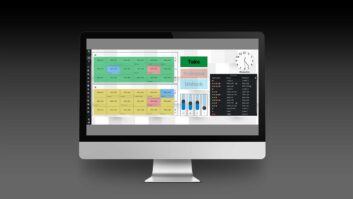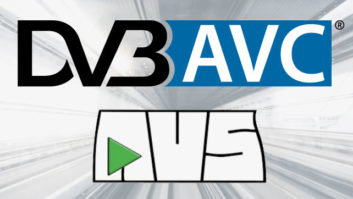The DVB Project has announced what it describes as a ‘major milestone’ with the success of the first live transmission employing DVB-C2, the new second-generation baseline transmission system for digital television via cable networks. According to the DVB Project, the significance of the live transmission demonstrates that DVB-C2 is now ready for implementation and will provide real opportunities for MSOs to introduce new tiers of HDTV, Video-on-Demand and interactive TV services.
The DVB-C2 live transmission was carried out on 22 April 2010 at Germany’s Technische Universitaet Braunschweig.
DVB-C2 employs the latest modulation and coding techniques to enable highly efficient use of cable networks. It offers a range of modes and options that can be optimised for the different network characteristics and the requirements of the different services planned for delivery to cable customers. It offers greater than 30% higher spectrum efficiency under the same conditions as today’s DVB-C deployments. After analogue switch-off, the cable networks can be optimised for digital transmission. This will result in a capacity increase of about 60% for DVB-C2 as compared to DVB-C.
Prof. Dr.-Ing. Ulrich H. Reimers, Institut fuer Nachrichtentechnik, Technische Universitaet Braunschweig and chairman, DVB Technical Module, commented: “DVB-C2 is the third of the second generation DVB broadcast standards, after DVB-S2 and DVB-T2. It is a radically new system which includes a huge number of innovations. The performance of DVB-C2 is so excellent that it is hardly possible to devise an even better standard in the future. Up until now, our knowledge about the features and performance of DVB-C2 was based on simulations. I am extremely pleased that my team has now concluded our development of a real DVB-C2 chain. This chain demonstrates that DVB-C2 can be implemented practically and it gave us the opportunity to prove that the predictions for the system’s performance were correct.”
Peter Siebert, executive director of DVB Project, added: “The motivation for the development of DVB-C2 was to increase the data rate by taking advantage of technological breakthroughs made since the introduction of the highly successful DVB-C. Alignment with the other second-generation standards, DVB-S2 and DVB-T2, was also part of the objective.”
The DVB-C2 standard is published by ETSI (European Telecommunications Standards Institute) as EN 300 429 V1.2.1 “Framing structure, channel coding and modulation for cable systems”. Further information on DVB-C2 can be found on the DVB website along with the DVB BlueBook A138 and the DVB-C2 Implementation Guidelines ( http://www.dvb.org/technology/standards/index.xml).
DVB has acknowledged the efforts of Institut fuer Nachrichtentechnik, Technische Universitaet Braunschweig and the European research project ReDeSign in reaching this milestone. www.dvb.orgwww.dvb-h.orgwww.mhp.org
www.dvbworld.org







